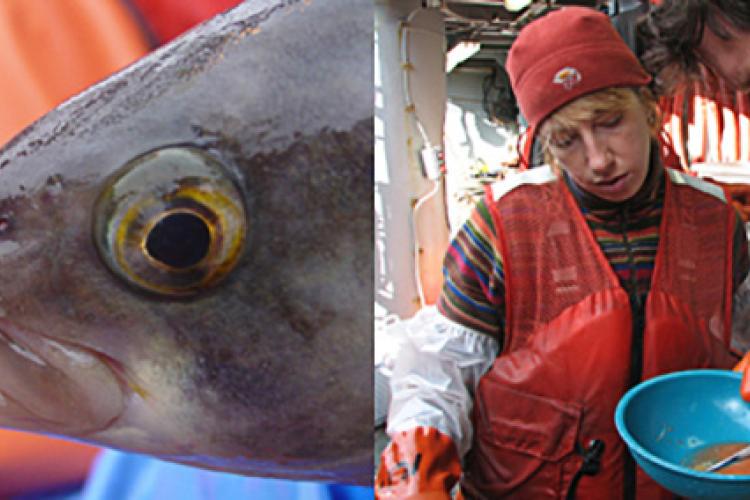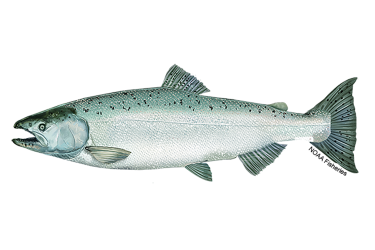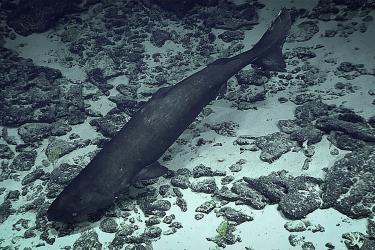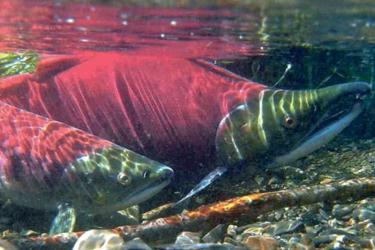
Atka mackerel research study area.
The Wisconsin 3.0 bioenergetics model parameterized for an adult walleye pollock, Theragra chalcogramma was used to examine the effects of diet composition, consumption, and temperature on Atka mackerel growth at two study sites: Seguam Pass in the east and Amchitka Island in the west. Either growth or consumption is estimated in bioenergetics modeling. This study used observed Atka mackerel growth to estimate consumption rates. Estimated consumption rates were corroborated with observed consumption estimates to determine the validity of using a bioenergetics model parameterized for walleye pollock. The model was then used to simulate growth under various scenarios to examine the effects of temperature and diet on Atka mackerel growth. The goal of this study is not to accurately model Atka mackerel consumption as a population and the impact on the prey field, but rather form the basis to make a comparison between each study area.
The secondary focus of this research was to examine the spatial and temporal variation in Atka mackerel food habits. In these 2 study areas The Magnuson-Stevens Act mandates that all Fishery Management Plans identify those habitats, including water column and substrates necessary to fish for spawning, feeding or growth to maturity. Average stomach fullness was used as a proxy for feeding intensity.
Patterns in feeding intensity were observed in relation to trawl exclusion zones that were established a protection measure for the Steller sea lion. The boundaries for trawl exclusion zones were established as 10 nm or 20 nm radii around Steller sea lion rookeries and haulouts and are not based on fish habitat. However, they can serve as zones representing disturbed and undisturbed habitat as these zones exclude all commercial bottom and pelagic trawling. By theory the inside of the trawl exclusion zone is relatively undisturbed in comparison to the outside of the trawl zone. The inside of the trawl zone may be an important factor in both feeding and spawning because Atka mackerel are considered a demersal species.
In both study areas there appeared to be distinct feedings grounds. Additionally, one of the areas showed significantly higher average stomach fullness inside the trawl exclusion zones. Essential fish habitat includes both the water column as well as bottom habitat. To understand the mechanisms that may be contributing to the observed spatial patterns in feeding intensity, several variables were examined: bottom depth, average fish length per observation, time of day and temperature. Using both surface and bottom temperature, areas were identified where the water column was well mixed or stratified. The only significant factor explaining observed feeding patterns was water column structure (mixed vs. stratified). It appeared that Atka mackerel prefer areas of strong mixing for feeding. However, in the fall months feeding intensity declines sharply. During this time, egg cannibalism contributes significantly to the Atka mackerel diet. The spatial pattern observed at the Amchitka study site showed the only feeding taking place occurred inside the trawl exclusion zone where egg cannibalism was prevalent. This may be due to the fact that Atka mackerel nests were located inside the trawl exclusion zone.







